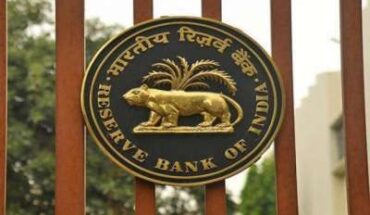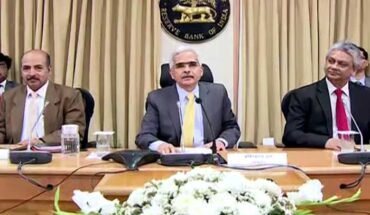
In India, more than one billion people use mobile phones. Of these, 70% are those who use smartphones, e-readers, tablets, or other electronic devices. Companies sell a specific charger for every smartphone, which is mandatory for everyone to buy. It often happens that a person carries several chargers to charge different devices. It also happens that the phone charger of one company is not compatible with other mobile phones or models. Often it is written in the instruction manuals that you should use only the charger that came with your mobile, to get proper charging. The downside is that you have to carry multiple chargers, which is cumbersome and expensive.
To strengthen the Digital India program and increase connectivity, the Government of India is working on an innovative plan, under which a single charger will be enough to charge multiple electronic gadgets across the country. You can also call it a ‘One Nation One Charger’ plan, which is actually the Universal Charging Device (UCD) scheme. The government is taking it seriously because it will bring down the consumption of raw materials and will also help in reducing e-waste. The UCD will be capable of charging a number of gadgets like smartphones, mobile phones, e-readers, and tablets that consume the same amount of power. At present, the idea is to make two separate UCDs for both feature phones and smartphones. Last year 162 million smartphones were sold in India, which is 11% more than in 2020. It is estimated that 200 million smartphones will be sold in the current financial year. Charging multiple devices with a single charger will be in the interest of the environment, because of less raw material and less e-waste generation.
Work from home (WFH) culture became popular during the lockdown, due to which companies bought 84% of additional electronic devices, including laptops and computers, for their employees. Of these, 23% of the devices will no longer be needed in the future. According to the Global E-Waste Monitor report of the United Nations, on average, each person in the world generated 7.6 kg of e-waste in 2021. In this way, 57.4 million tonnes of e-waste were generated all over the world. In 2019, 5.36 crore metric tonnes of e-waste were generated. It was so much that if 350 ships were to be parked in a 125 km long line, they would all be filled with e-waste.
In India, about 250 million mobiles are becoming e-waste every year. The chemicals released from them cause diseases like cancer and DNA damage. Useless mobiles, computers, and chargers are adding to the e-waste on the earth. This is equivalent to throwing away 1000 laptops every second. India is generating 2.4 kg of e-waste per capita. In this case, our country is third in the world after the US and China. The situation is that e-waste is generated more than plastic waste. Most e-waste is generated from computers (70%). Mobile phones generate 12%, medical devices 8%, and electric devices generate 7% of e-waste. India does not have an adequate system for recycling e-waste. Only 20% of the total e-waste generated in the country is recycled.
E-waste is extremely dangerous from the environmental point of view because the chemicals released from it contribute to climate change. Metals like copper, aluminum, and lead get dissolved in the air when e-waste is burnt. The economic value of e-waste is also very high, because of the precious metals mixed in it. For example, 1 million used mobile phones may contain 24 kg of gold, 16,000 kg of copper, 350 kg of silver, and 14 kg of other precious metals. In the year 2021, the amount of e-waste generated in the country was estimated to be Rs 4.5 lakh crore. E-waste poses many dangers to the environment and is also fatal to the human body. This can lead to diseases such as lung diseases, cancer, skin diseases, and damage to DNA and thyroid.
Electronic waste or plastics do not only harm the environment, the clothes we wear also cause a lot of damage to the environment. According to the United Nations Environment Program (UNEP), the fashion industry accounts for up to 8% of carbon emissions. Fossil fuel is used to produce polyester, which also contributes to the release of plastic microfibers into the ocean and the piling up of waste in landfills. In the world, hardly 1% of the clothes are recycled, from which new products are made. According to a report by the Ellen MacArthur Foundation and UNEP, carbon emissions due to the textile industry could be reduced by up to 44% if we all re-wear our clothes. Buying second-hand products and wearing clothing more often can help reduce the impact of climate change. The Ellen MacArthur Foundation believes that even after washing jeans at least 30 times, their quality remains intact. Research also found that people often wear cloth only 7 to 10 times and then throw it.
Running a factory without harming the environment is a big challenge. Perhaps that is why the Adani Group and Reliance Industries have embarked on the development of renewable energy sources. Strong evidence is emerging that the next several projects of both corporate houses will be based on eco-friendly technology. Such initiatives will not only protect the environment but will also give a boost to self-reliant India. Adani Group is working on eco-friendly energy sources and is poised to become the world’s largest company in this regard. On the other hand, Reliance Group is also making big plans in the direction of green energy. In this case, the Adani Group has come in a position to give direct competition to Ambani’s plan. The work of Adani New Industries Limited (ANIL) will be to manufacture wind turbines for power generation from wind, prepare green hydrogen projects, produce solar panels and batteries for solar-powered equipment and machines, etc. Adani aims to produce hydrogen at the lowest cost in the world.
The writer is a senior journalist and columnist. Views are personal
Twitter @NarvijayYadav






